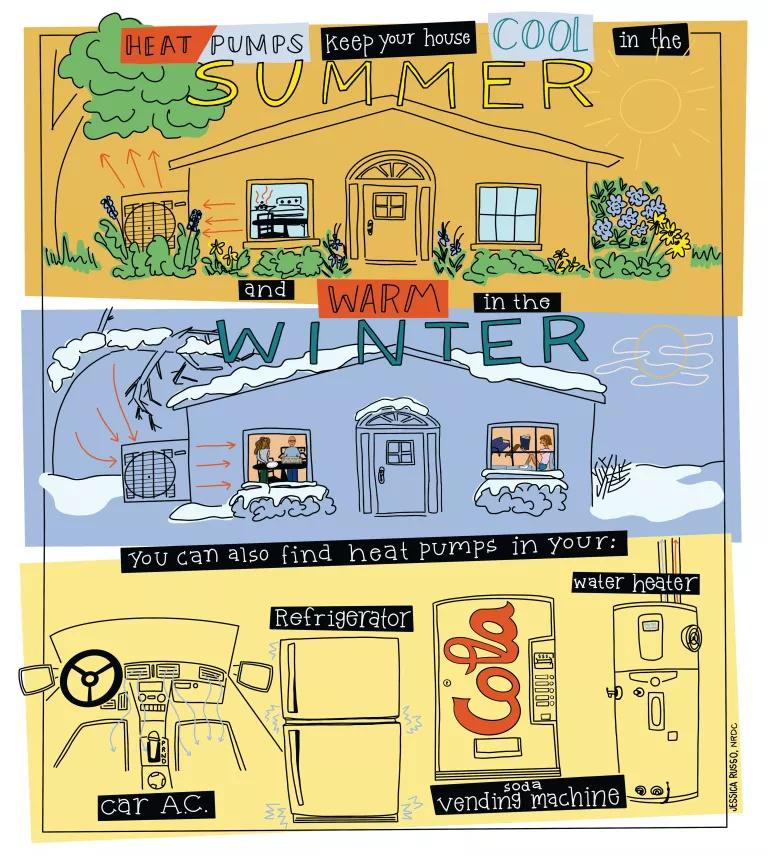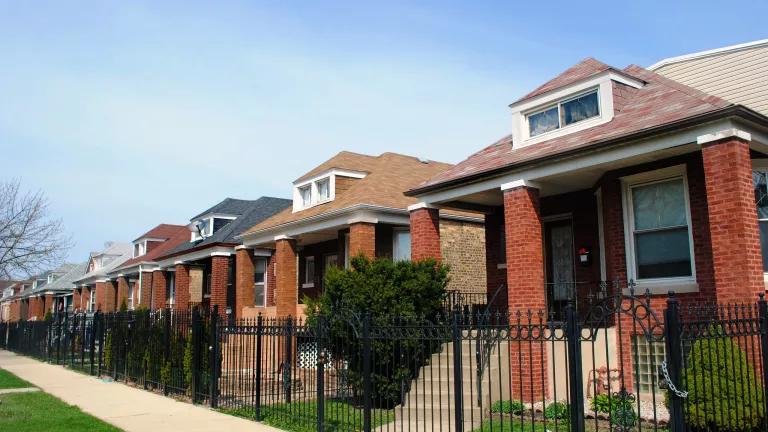Want to Cut Heating Costs? Replace Your AC!
This blog was written in celebration of Energy Efficiency Day 2022.

This blog was written in celebration of Energy Efficiency Day 2022.
Fall is finally delivering relief to many Californians after a brutal late-summer heatwave. Temperatures experienced in mid-September broke records, with Sacramento reaching 116°F and San Jose, in the heart of the breezy Bay Area, breaking 109°F.
As winter approaches, you might not be thinking about upgrading your air conditioning unit. But replacing an old A/C system with a heat pump may be the very thing your wallet needs this winter – offsetting your heating costs in the near-term and cutting your cooling bill next summer, all while delivering critical climate and resiliency benefits to California’s electric grid.
Heat Pumps: The Star of Efficiency Day 2022
We’re calling it: heat pumps are one of the stars of this year’s Energy Efficiency Day. With an influx of state and federal funding to support their deployment – especially in low-income and disadvantaged communities – heat pumps are poised to save you money in energy costs. But what makes these devices so efficient and climate-friendly?
Heat pumps are a special, highly efficient appliance – an air conditioner and heater all wrapped up in one! They use electricity to move heat from one place to another. Your refrigerator is a heat-pump, drawing cool air from outside of your house to keep your food cold. Similarly, air-source heat pumps draw hot or cold air from their surroundings to heat or cool your home, and heat pump water heaters do the same to provide hot water.
Because they draw heat from the surrounding air, heat pumps achieve fantastic efficiency gains compared to traditional appliances: providing three or more units of heat for every one unit of energy consumed. High performance versions can achieve 500 percent efficiency! By comparison, gas furnaces and electric resistance heaters rely on fuels or electricity to “create” heat, which limits their efficiencies to about 95 percent (gas) or 100 percent (electric resistance) – and that’s for the most efficient devices.
This isn’t magic of the future – heat pumps exist right now, and they have a myriad of benefits. Here’s why you should consider switching out your old A/C for a heat pump this winter.
Upgrading Your A/C this Winter: Good for your wallet, climate, and the electric grid
Good for your wallet
Beginning in 2023, the Department of Energy will require that central A/C and heat pump systems achieve a Seasonal Energy Efficiency Ratio (“SEER”) of 14 and even 15 in the Southeast and Southwest including California, improving the efficiency of new cooling appliances. However, old A/C systems in California households – whether they be central systems, window A/C units, or equipment for manufactured homes – may be struggling to keep up, with SEER ratings as low as 8 or 9.
Replacing old A/C units with a heat pump can improve your home’s cooling efficiency by 50 percent. These efficiency gains will translate into summer savings – cutting your cooling bill by a third. Moreover, heat pumps only cost a little more than a new A/C unit upfront, and installing a heat pump where your old A/C unit sits is a simple, low-cost changeout since they rely on similar infrastructure. Heat pumps can save you thousands of dollars on your utility bills over their lifetime. But the benefits don’t stop there.
Installing a heat pump can also save you money this winter. As described above, heat pumps can more than triple your home’s heating efficiency if you currently use a gas furnace or an electric resistance space heater. If you rely on gas for heating, installing an electric heat pump will have the added benefit of protecting you from skyrocketing gas prices, which reached new records in 2022 due to Russia’s war on Ukraine, increased exports of U.S. natural gas to Europe, and extreme weather events. The high heating efficiency of heat pumps in most California climate zones can render your gas or electric resistance back-up obsolete – all while preparing you for next summer.
Good for the climate
Installing a heat pump will reduce your climate impact, especially to the extent that it replaces your reliance on gas heating. The single most cost-effective path to eliminating carbon emissions from California’s building stock is efficient electrification of current gas appliances. Recognizing this fact, Governor Newsom and state agencies have adopted goals of 6 million heat pumps in homes and zero-emission space and water heating appliance sales by 2030.
As we’ve previously reported, swapping out your gas furnace for an electric heat pump can cut your heating-related greenhouse gas (“GHG”) emissions by up to 72 percent –and the climate benefits will only increase as the state advances towards its goal of 100 percent clean electricity. And, of course, reducing the amount of electricity it takes to cool your home can result in significant GHG emissions savings, especially at times when the electric grid is most strained.
Good for the electric grid
Finally, replacing an old A/C unit with a heat pump will improve the resilience of California’s electric grid, reducing the risk of heat-induced blackouts for everyone. California’s electric grid is “summer-peaking,” meaning that the hour of the year when Californians consume the most electricity occurs during the summer. The grid must be designed to meet that peak load, even if demand for electricity throughout the rest of the year is much lower.
California’s peak electric load occurs during summer late afternoons due to the large amounts of energy required to cool residential and commercial buildings across the state. Replacing the least efficient AC systems with highly-efficient heat pumps can thus significantly reduce California’s peak electricity demand. This will help with grid reliability in summer, as well as with heating bills in winter, when the heat pump will avoid the use of expensive "natural" gas.
Climate change-induced heat waves are only expected to increase cooling demand surges in summers to come. Improving your home’s cooling efficiency by installing a heat pump can help the grid cost-effectively adapt to the extremes of climate change – keeping everyone safer, healthier, and cooler.
Now Is the Time to Buy a Heat Pump
There has never been a better time to buy a heat pump. In addition to the cost, climate, and grid benefits of replacing your old A/C unit with a heat pump, there are now a myriad of government funding opportunities to sweeten the deal.
The Inflation Reduction Act, passed in 2022, sets aside historic funding for home efficiency and electrification upgrades, including heat pump installations, in the form of tax credits, equity-centered rebate programs, and loans to low-income and disadvantaged households. Additionally, California recently allocated $1.4 billion in state budget surplus for climate-friendly and climate-ready homes, community centers, and schools, including new funding for the successful residential heat pump incentive program, TECH Clean California.
All told, government policy, energy efficiency, climate benefits, and simple customer economics have aligned to make heat pumps a star technology of Efficiency Day 2022. If you own an old A/C system, you are poised to reap some of the greatest benefits of heat pump installation – no matter what time of year it is.
If you would like to learn more about Energy Efficiency Day or join as a supporter, check out the Energy Efficiency Day website.





